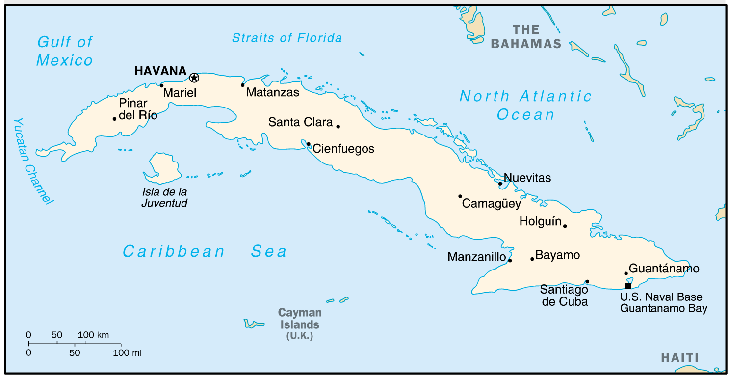
Status Quo Side: Cuba
Non-Status Quo Side: USA
Region: Western Hemisphere
Conflict Type: Interstate
Issues in Dispute: Governance, Strategic

After Fidel Castro's assumption of power in Cuba, US relations deteriorated. Resentment of US economic pressure, bombing raids by exiled followers of former Cuban President Fulgencio Batista from Florida, and fear of US invasion were matched by US outrage at property expropriations and political executions, plus anger at Castro's pro-Soviet Communist leanings.
CIA arming and training of exiles, approved by President Dwight D. Eisenhower, was begun in contact with opposition groups within Cuba. Failure to consolidate indigenous guerrilla groups led to an expanded invasion force. Official relations worsened as Soviet arms arrived in Cuba. Washington complained to the OAS, Castro denounced the US to the UNGA, the US imposed an export embargo, and in January 196l broke relations. With President John F. Kennedy's approval, subject to the non-use of US forces, the invaders left their Guatemalan training camp on April 14.
Exile pilots bombed Cuban planes on the ground but failed to destroy Cuban air power. Exile forces landed on April 17 but Cuban planes prevented supply ships from landing. US naval forces and aircraft remained offshore and inactive. The invasion force was captured when its supplies were exhausted and President Kennedy refused to commit US forces.
Diplomatic efforts ultimately led to the prisoners' release. The USSR announced an agreement to supply arms and technical help to Cuba. US-Cuban relations remained in the deep-freeze, particularly after the Cuban Missile Crisis of 1963.